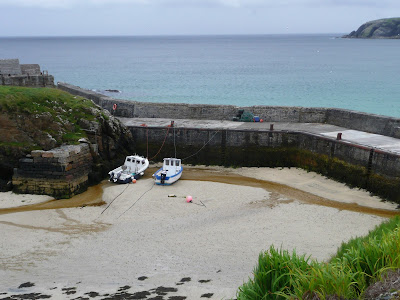 |
| Stornoway |
Stornoway is a strongly Calvinist enclave, an important port and the administrative centre for the Outer Hebrides islands. I stayed at Heb Hostel, a clean and friendly place to rest your head and enjoy a warm peat fire after a day exploring the rest of Lewis. And you’ll want to explore, because there’s not a lot to do in Stornoway.
I was with two dozen other people on the 10-day Compass Buster tour of the Scottish highlands, the Western Isles, Orkney, Skye and Loch Ness run by Haggis Adventures, which gets you out and about to see and experience several sights without the hassles of renting a car and driving.
 |
| Abhainn Dearg Distillery |
 |
| Callanish Standing Stones |
 |
| Carloway Broch through a wet camera lens. |
 |
| Gearrannan blackhouses |
 |
| Butt of Lewis |
 |
| Port of Ness |
Upon arrival back in town, I went to an unlicensed Thai restaurant and paid $18.50 for a good if unexceptional meal of two chicken skewers, fried rice, beef and vegetables. McNeill’s pub was the place to be later in the evening for fruit-flavoured ciders (which are much more popular in the United Kingdom than in Canada) and musicians covering country songs until midnight.
When morning came it was time to make the journey south to Harris, which is attached to Lewis by a causeway. Harris has higher elevations and its rocks evoke thoughts of lunar landscapes, but the white sands of Loggantir beach were as nice as you’d find at Caribbean resorts. The water, however, was still cold even in July and there was no-one swimming.
 |
| Loggantir dunes |
 |
| St. Clements Church |
After reaching the southern tip of Harris, we headed back north to the village of Tarbert, the embarkation point for the ferry to the Isle of Skye. It didn’t take long to walk around, so it wasn’t difficult to find Isle of Harris Distillers Ltd. While the distillery is waiting for its Scotch to mature, it’s making gin. I was given a sample, and it was fine, but I didn’t spend $63 for a bottle. Nor did I buy any of the tweed that Harris is famous for before boarding the 4 p.m. ferry to Skye.
No comments:
Post a Comment